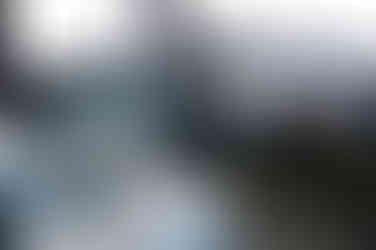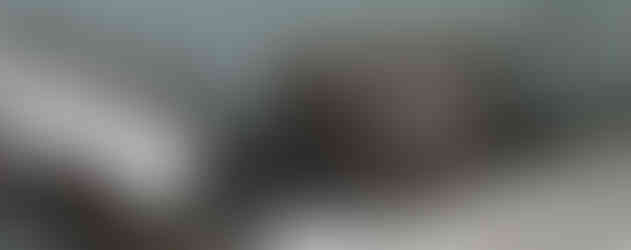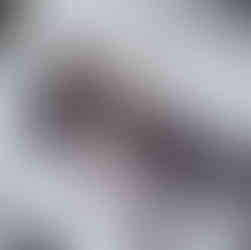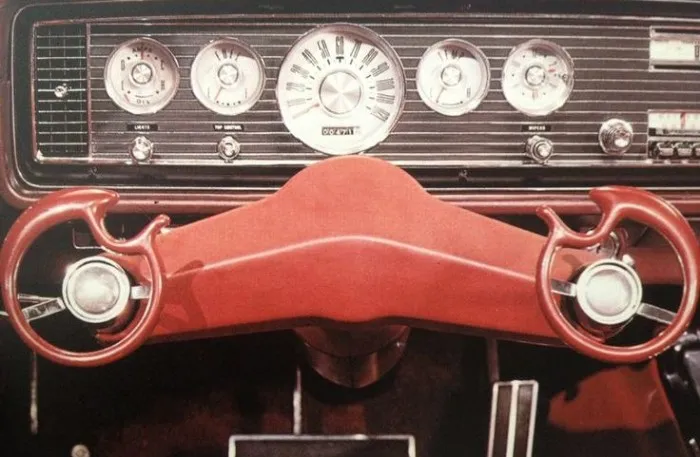The Alfa Romeo Dauphine and R4 L: the transalpine French cars!
- COCKPIT

- Dec 23, 2024
- 7 min read
Renault cars manufactured and badged by Alfa Romeo, there is enough to surprise more than one.
The story begins in the aftermath of the Second World War, when Alfa Romeo had to completely rebuild its factories in Portello in Milan and Pomigliano d'Arco near Naples. The Milanese manufacturer had been nationalized in 1933 and depended on the sprawling Italian public holding company IRI. Alfa Romeo therefore remained a small Italian manufacturer compared to the Italian giant FIAT. The company that then produced luxury cars sought to expand by producing popular cars, but they did not yet have this know-how. On the other side of the Alps, Renault was looking to expand internationally, but customs duties at the time were so high that it was more profitable to produce locally. The reason was the Treaty of Rome signed in 1957 by France, Germany, Italy, the Netherlands, Belgium and Luxembourg, which marked the beginning of a Common Market which, as its name suggests, was intended to be primarily economic, establishing the free movement of goods and merchandise. Renault was already producing its Dauphine in Spain through its subsidiary FASA (which would become a subsidiary of Renault). The scenario was then all set for the Italian side, and in 1958 a cooperation agreement was signed between the two brands, with several components. Renault became the distributor of Alfa Romeo in France, while Alfa was preparing to produce the Dauphine and then its more luxurious version, the Ondine, on its production lines in Portello, near Milan. In addition, some partnerships will take place between the two brands for utility vehicles.
The Alfa Romeo Dauphine
Production of the Dauphine began in 1959, in CKD. It differed little from a basic model, but bore the words "Dauphine Alfa Romeo" (or "Ondine Alfa Romeo") on its sides and at the rear. A few minor aesthetic details were different from the French model, but for the rest, they were indeed twins.
The Dauphine thus became an Alfa Romeo model and was nationalized Italian in order to avoid paying import customs duties. In terms of spare parts, Renault-Italia had exclusive rights to sell spare parts. This was also done through the Alfa Romeo network.
The Dauphine assembly line was installed in the Alfa Romeo factory in Portello, Milan, next to those of the Giulietta and Alfa 1900. The line was inaugurated on June 4, 1959 in the presence of the CEO of Régie Renault, Pierre Dreyfus. It was sold at its release for 890,000 Lire but very curiously, we still find models imported from France in the catalog at 950,000 Lire at Renault dealerships while the French manufacturer had banned sales from the moment the model was marketed by Alfa Romeo.
The Dauphine manufactured in Milan enjoyed some success in the early years with 6,452 units sold in 1959 and 20,047 units in 1960, but less than expected. In May 1960 the 4-speed gearbox of the Dauphine Gordini was finally delivered by Renault to be fitted as standard on all cars produced in Italy. The 3-speed gearbox was a serious handicap for Italian customers.
In October 1960, Alfa Romeo began production of the Ondine model, a more accomplished and luxurious version of the Dauphine in the hope of satisfying a larger clientele. Alfa Romeo's management had wanted to significantly increase the engine's power, but Renault refused, as it did not have it. To face the fierce competition from the Fiat 600, it was sold for 845,000 lire, which in fact forced the price of the Dauphine to drop to 795,000 lire in December 1960. The Ondine's career was very short and ended in September 1962 after about 2,000 cars had been produced. Some unsold stock was exported to France.
Sales volumes continued to decline from 1961 with 19,297 Dauphine and Ondine combined, falling to 11,786 in 1962 and 6,347 in 1963.
For the 1964 model year, disc brakes were finally fitted as standard, but despite this, only 6,447 Dauphines found buyers. The drop in sales further increased to 3,120 units in 1965 and only 345 in 1966. The internal struggles between Renault and Alfa Romeo, mutually blaming each other for the lack of evolution of the model and its underpowered engine, led to the cessation of production.
In fact, from the beginning appearances were deceptive, because the two "partners" were mutually suspicious of each other. The bilateral contract was very quickly rendered null and void, because if the Alfa Romeo network did indeed distribute the Dauphine in Italy, Renault continued to sell it directly in its Italian network and even worse, proved incapable of marketing the slightest Giulietta which would never be exhibited in its French dealerships.
The adventure with Renault would therefore end in failure.
For the record, in 1965 Alfa Romeo sold 60 Alfa Romeo Dauphines to the Israeli importer ITIS in order to get rid of the last stocks, which caused an outcry in Israel. ITIS was only used to import Alfa Romeos and Renault, after breaking a manufacturing contract with Kaiser-Frazer in 1959, capitulating to threats of boycott from the Arab world, was no longer in good odour. ITIS may have claimed that these were Italian cars, but the Israeli Ministry of Commerce remained inflexible and refused ITIS the possibility of importing Alfa Romeo Dauphines.
This Renault-Alfa Romeo alliance was definitely never simple!
The Alfa Romeo R4L
Riding on the success of the Dauphine's sales in Italy in its early years, Alfa Romeo's managers considered selling the Renault 4 in their Italian dealerships, negotiations with Régie Renault began and were going well. In this first phase of the cooperation, a sort of gentleman's agreement seemed to have been reached, but the death of Dr. Fascetti in 1960 and his replacement by Giuseppe Petrilli destroyed this fragile balance. The man was close to the Agnelli family, and he would do everything to defend its interests, gradually pushing his pawns to counter French ambitions. The first, and not the least, was Giuseppe Luraghi, back in business at Alfa after an interlude at Lanerossi. On April 7, 1961, in front of Pierre Dreyfus, Bernard Vernier-Pallez and Maurice Bosquet, he explained why he did not want to assemble the new Renault 4: "It is difficult for us to sell a car that will compete with Fiat, which risks reducing Italian production and causing unemployment. Alfa Romeo will not be able to be an accomplice in this operation by making its network available to Renault." The cohabitation is similar to a struggle for influence. Everything is a pretext for endless negotiations. The Régie gives in on the production site, and the R4 will be assembled in Pomigliano d'Arco, near Naples, to participate in the major industrial decentralization operation desired by the government and led by the S.A.M. (Société pour le développement automobile) created jointly by Renault and Alfa Romeo in November 1961. In return, the Régie obtains the right to set up a second distribution network, separate from that of its partner, and in which it will be able to distribute its R4. At the same time, an agreement between S.A.M. and Renault was signed on 8 February 1962, extending the R4 production agreement until February 1972.
Everything was then in place for the final act of a sinister farce. In Pomigliano d'Arco, the first R4s began to roll off the production line. This is not an exaggeration, given the number of manufacturing defects they suffered from. In a letter dated 4 July 1963, Mr Siouffi of the R.N.U.R. wrote to Alfa Romeo's general staff that he had counted "142 defects compared to 139 in January [3]". He deplored the "persistence of recurring problems, particularly with regard to the applications of mastic, interior paint, sealing [...] which was clearly insufficient on the seven cars tested (upper part of the doors, quarter windows, cowl feet, battery compartment, pedals, etc.)". He lists the most glaring concerns: "The almost systematic creeping when closing the right front doors on the upper hinge; the insufficiently tightened sliding window and quarter panel locks; the incorrect alignment of the steering; the non-compliant opening of the front wheels; the poorly centered steering tube in the sleeve; a perforated Weiss joint bellows; the absence of the nut fixing the power cable to the starter". He concludes his report in a disillusioned manner by counting 10.7 major defects per car, compared to 8.8 in January, including 3.2 making it unfit for sale.
The 4L will not have its place in the Alfa Romeo catalog, unlike the Dauphine. Faced with this observation, the Production Office takes its time to respond. It does so in note PR/1981 of October 12, 1963, addressed to the CEO. Alfa Romeo, Igninio Alloisio and entitled, with magnificent cynicism: “Obstacles raised by Renault to the production of the R4L”. It can be read, for example, that “the screw 10 220 808 09 supplied […] for fixing the front bumper (two per car) is not correct since it is 90 mm long instead of 80 as planned. This hinders assembly since we are forced to insert washers”. Another note, dated the same day, complains that with shipment “No. 57, Renault has introduced a modification to the tailgate lock. It was not mentioned, and we do not have the tool specifically designed for its assembly. This is why we were forced to deliver incomplete cars”.
Paris accuses Pomigliano, who accuses Paris. And what is being done in Milan? There is a storm because the production rates of the 4L are not meeting the schedule, far from it. On March 29, 1963, engineer Sassi, head of the Neapolitan factory, is asked to remedy this as soon as possible, otherwise, writes Mr. Casseville, "I will be forced to impose a program of direct imports which would result in the end of assembly at Pomigliano." In fact, the die is cast, and the new tax calculated on the length of the vehicles and no longer on the cylinder capacity (an idea from Fiat) seals the fate of the 4L: it measures 3.66 m, its direct competitor, the Fiat 850, 3.57 m. Nine small centimeters that make all the difference between a small car not penalized, and an average car overtaxed. During 1964, Renault therefore stopped production of the 4L and the Dauphine, contenting itself with selling off stocks until 1966. And after an unsuccessful attempt to bring part of the joint Alfa-Renault network under its wing, the French manufacturer withdrew from the transalpine market, leaving the Italians to fight among themselves and after having produced 41,809 R4s on site, in two finishes: an R4 R1120 with a sheet metal rear quarter panel, and the 4L R1123 with three side windows, both featuring the more responsive 845 cm3 engine.




















































































Comentarios